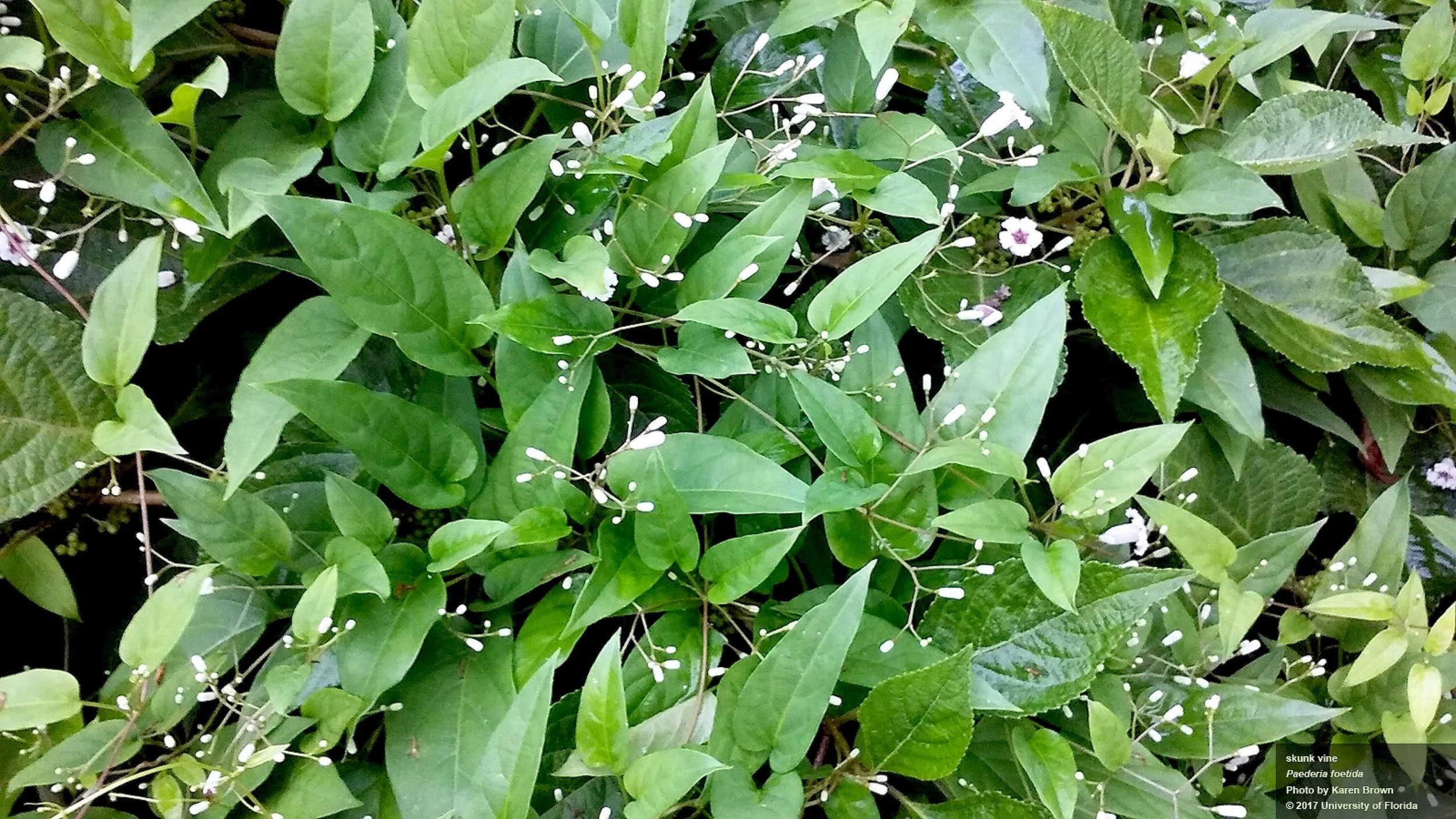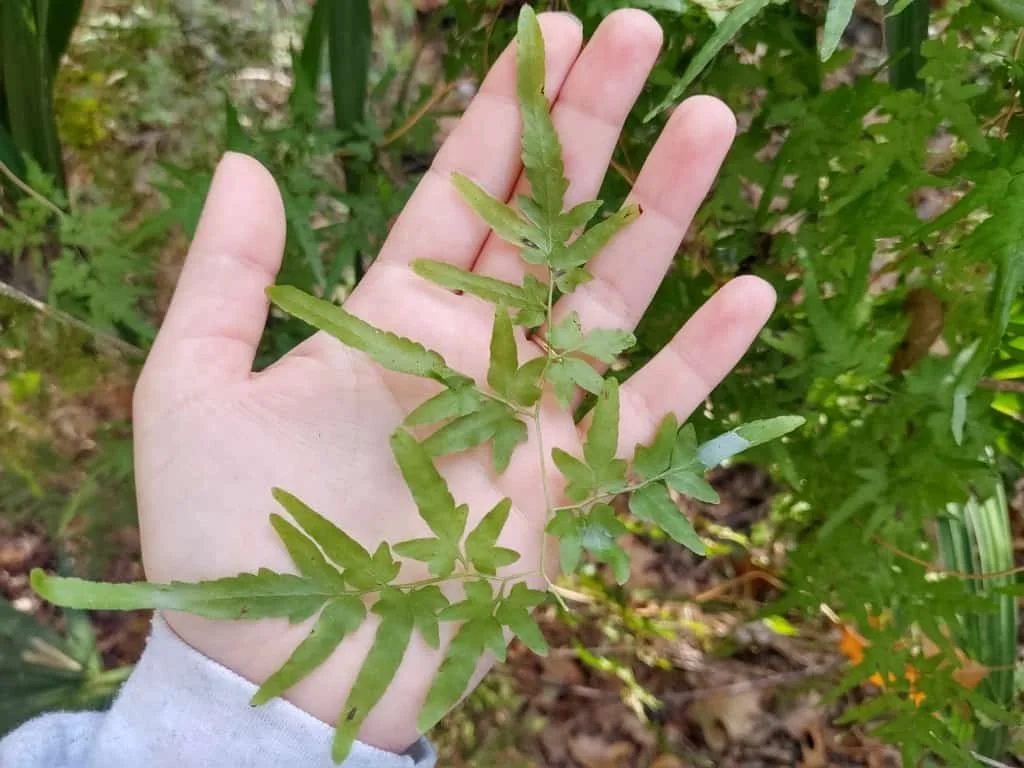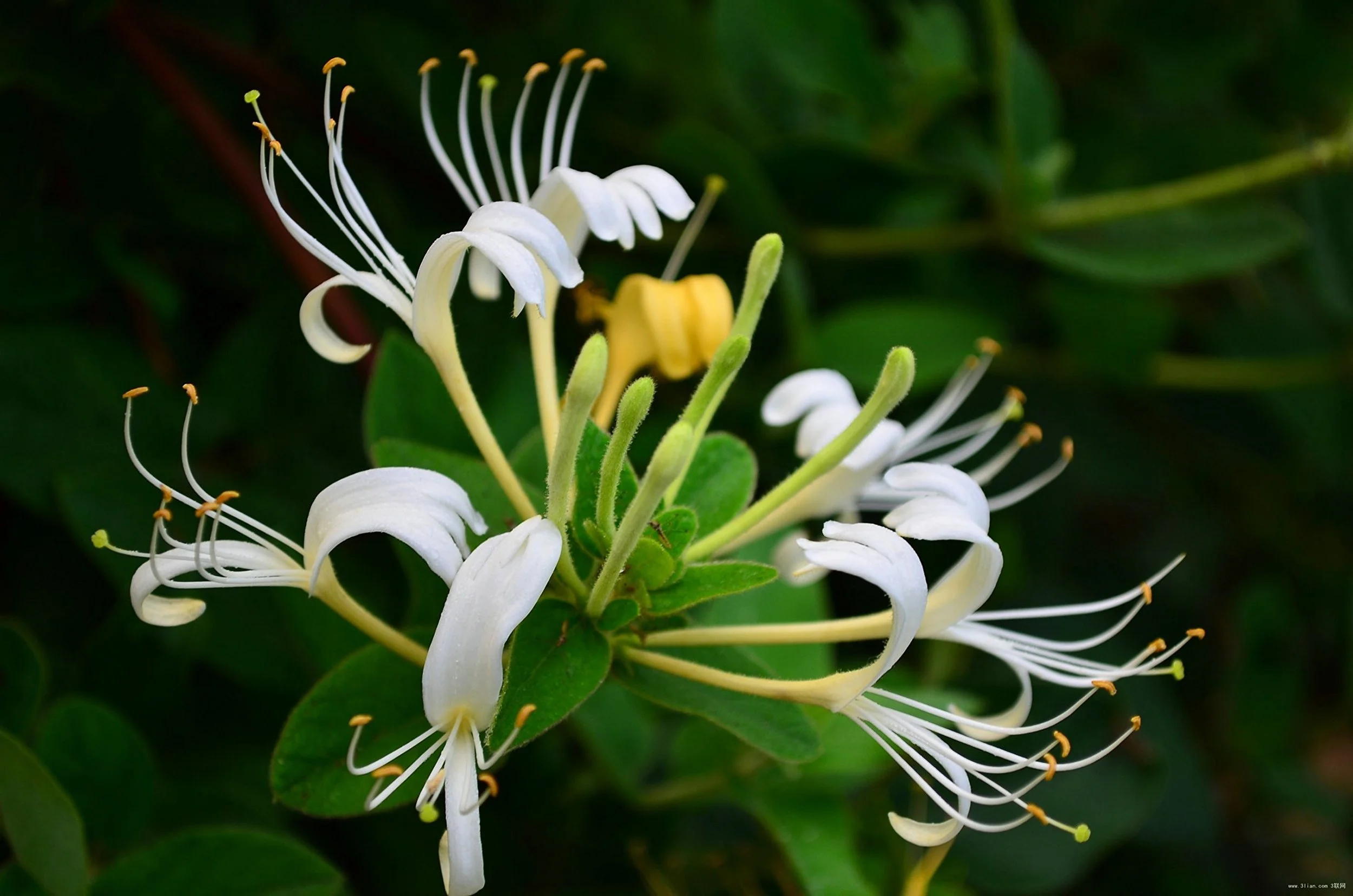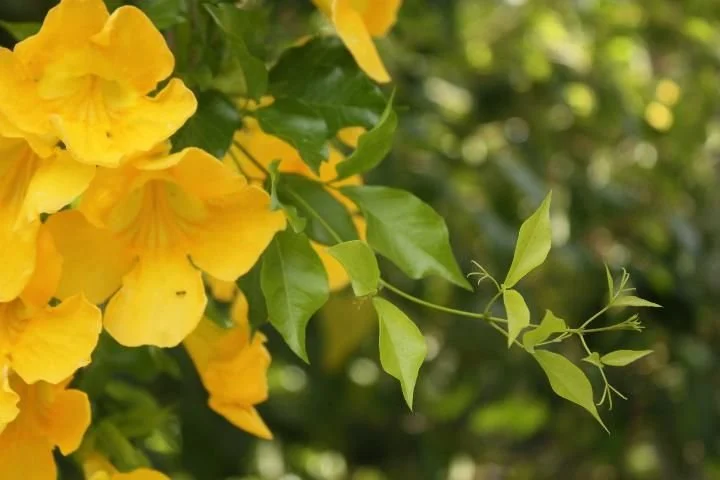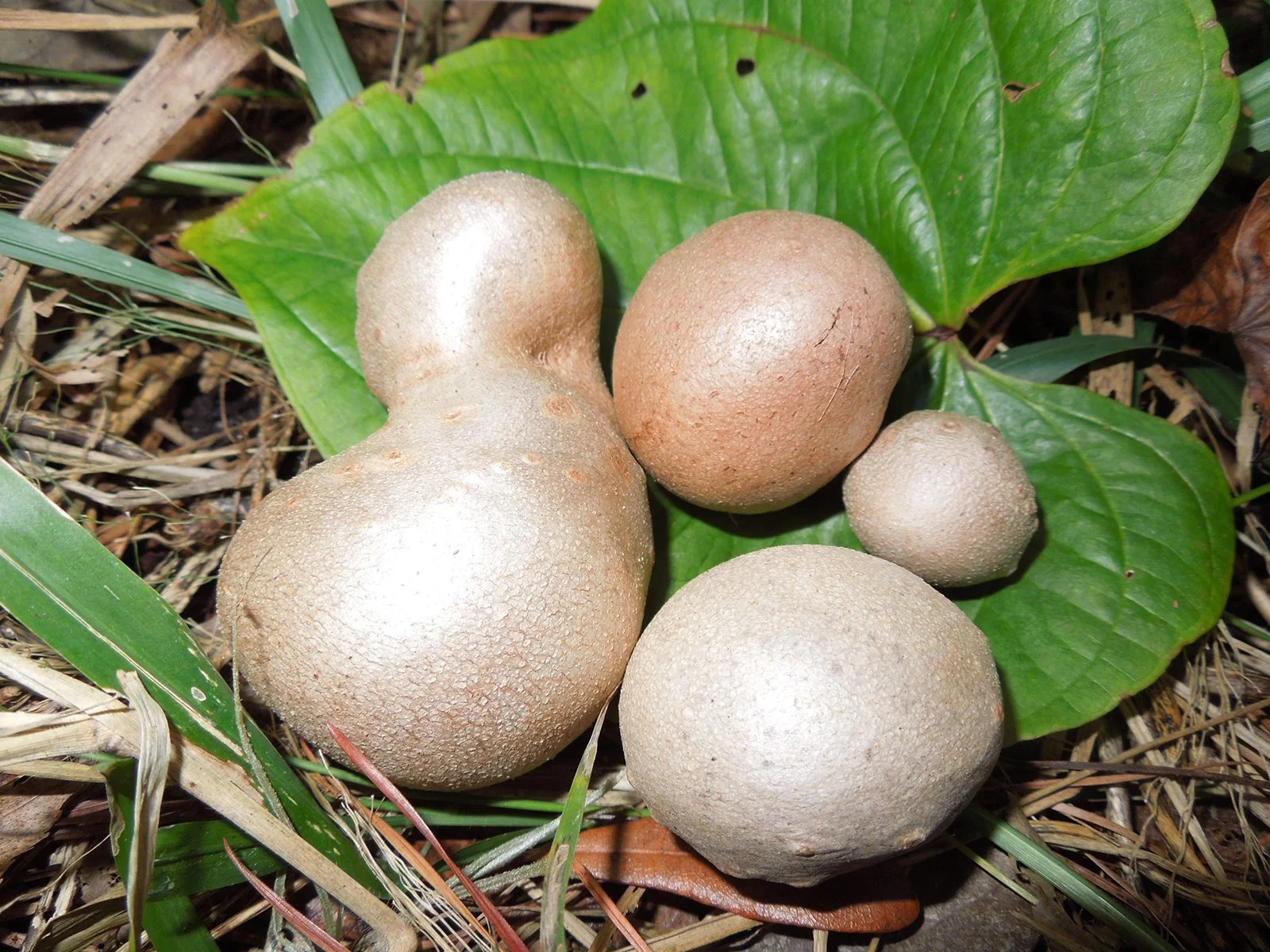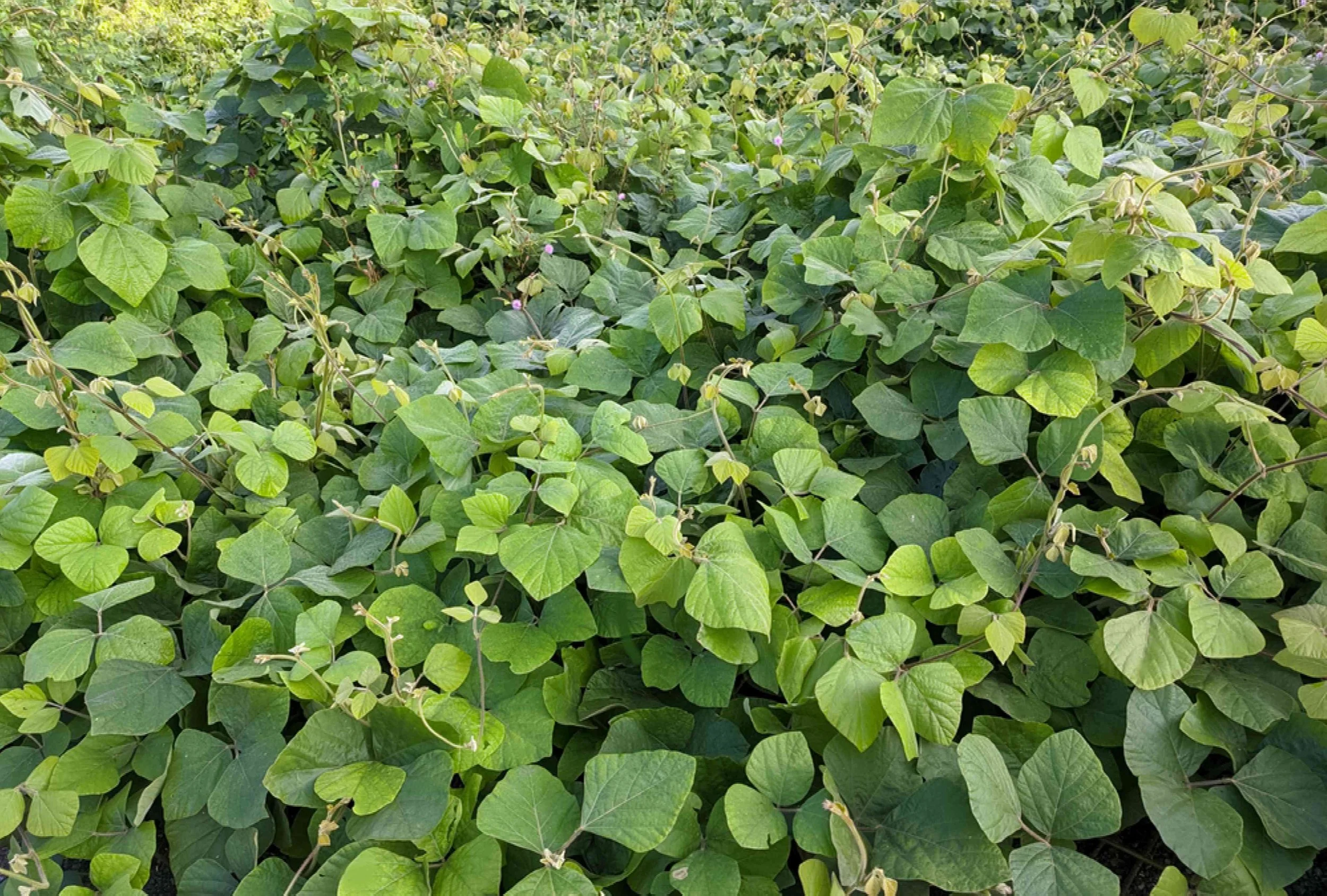Vines can unexpectedly dominate the growing season, particularly when there are no late freezes and a warm, wet spring. If you haven't noticed yet, I encourage you to sharpen your observation skills and check your property for any rapid vine growth that may be occurring.
There are many native vines in the Tallahassee area, and most of them are only mildly aggressive, which means they can grow well alongside other plants without completely dominating the space. Additionally, these native vines are generally more compatible with large trees and rarely harm them. Therefore, it’s best to let native vines, such as grapes, smilax, Virginia creeper, passion vine, pipevine, and even poison ivy, thrive on their own whenever possible.
Our region is also home to many invasive vines, which pose significant threats to local ecosystems. Notable aggressive species include Old World climbing fern, skunk vine, Japanese honeysuckle, English ivy, Asiatic jasmine, creeping fig, Chinese wisteria, cat’s claw, air potato, and kudzu, to name a few. These invasive vines can overwhelm herbaceous plants and shrubs and pose a serious risk to old-growth trees.
Skunk vine
Skunk vine (Paederia foetida) is an aggressive, twining perennial vine that is spreading rapidly in residential yards and natural areas in Leon County. When you crush the leaves, they emit a foul odor, which is how it got its name. Young vines can easily be overlooked, as their green leaves blend in with the surrounding vegetation of shrubs or trees.
It becomes more noticeable when it is in bloom mid-summer, featuring small tubular flowers that are light grayish pink with red centers. If you spot it flowering, act quickly, as these multiple flowers will soon produce abundant shiny, light brown berries, which can be spread far and wide by birds and other browsers.
Japanese climbing fern
As you stroll through our local woodland parks and forests, you may also notice the Japanese climbing fern (Lygodium japonicum). Its fronds have a delicate, lacy appearance and often wind around the stems of shrubs and the trunks of trees. These vine-like ferns are highly adaptable and can thrive in various environments, whether in full sun or shade. If you decide to remove them by hand, be aware that the stems will break off easily.
Therefore, it’s crucial to dig out the entire root system and shake off the excess dirt from the roots. Once you have removed them, pile the roots and vines in an area where they can dry out and will not come into contact with the soil. Avoid removing the plant when it is releasing spores, as climbing ferns reproduce by producing numerous tiny airborne spores that can disperse through the air and grow into new plants.
Japanese honeysuckle
Japanese honeysuckle (Lonicera japonica) is another vine that is most easily identified in the spring, as its evergreen habit makes it one of the few vines with leaves at the end of winter. Just like skunk vine, pay special attention to the vine if it has berries on it.
This goes for most invasive vines and other plants – if it has seeds or berries, move it as little as possible and dispose of them in a trash bag on-site. A great substitution for Japanese honeysuckle is coral honeysuckle, which can be distinguished from its invasive counterpart by its flowers, which are orange or pinkish red instead of white and fragrant.
English ivy, Asiatic jasmine, creeping fig
English ivy (Hedera helix), Asiatic jasmine (Trachelospermum asiaticum), and creeping fig (Ficus pumila) are commonly found in neighborhoods and urban areas, where they have spread beyond their original landscapes and taken over the surrounding spaces. All three vines are vigorous climbers that thrive in shade and can warp or damage large deck structures and fences if allowed to grow unchecked.
Chinese wisteria
Chinese wisteria (Wisteria sinensis), with its attractive purple-lilac flowers that grace the landscape in spring, serves as a poignant reminder that aesthetic appeal can often mask detrimental ecological impacts. This species is highly invasive, capable of overwhelming native vegetation with its extensive growth. The diameter of its stems can reach up to 15 inches, posing a threat to the photosynthetic capabilities of overshadowed trees. American wisteria (Wisteria frutescens) serves as a more environmentally sound alternative.
Cat's claw
Cat’s-claw vine (Dolichandra unguis-cati) derives its name from the three-pronged "claws" it uses to climb up tree trunks, fences, and walls. If left unchecked, cat’s-claw can easily overtake and smother everything in your yard as it seeks to reach the sunlight necessary for blooming. To effectively eradicate cat's claw, begin by loosening it by gently digging down with a shovel.
Then you can grasp the stem close to the ground and pull it slowly but steadily. The plant may try to resist, and if it breaks, it can leave behind large tubers just below the surface. These remnants can sprout new vines if left unattended, so stay determined. Dig a couple of inches down, grasp the stem again, and continue pulling until you completely remove the tuber. Native crossvine or Carolina jessamine would make a great replacement for cat’s-claw vine.
Air potato vine
Air potato vine (Dioscorea bulbifera) has wound its way throughout Florida, from pine forests and creek floodplains to backyards. Their heart-shaped leaves are most noticeable in the spring and fall, where they can take over large areas and choke out trees and shrubs. These wild yams can grow eight inches in a single day! In the fall, the plant produces a potato-like tuber called a bulbil, which grows above ground on the vine. The bulbils drop in the winter and then produce new vines the following spring.
Kudzu
Kudzu (Pueraria montana) is one of the best-known weeds in the Southeast. Some consider it the poster child of invasive plants – “the vine that ate the South!” It grows almost anywhere and over almost anything. Entire buildings have been completely covered by this plant, and it has also been known to grow over and uproot trees.
Any vegetation it covers will soon die due to a lack of sunlight. For most vines, it’s possible to follow the plant back to its main roots, which, once removed, puts a real damper on future growth. This even goes for kudzu, although its massive size requires additional time and labor to truly beat back.
Encourage natives
Our yards and natural areas suffer a decline in biodiversity when overrun by invasive vines. The disappearance of native plant diversity leads to a corresponding loss in native insect populations, for many insects cannot digest plants that originate from different regions of the world.
This reduction in insect diversity, in turn, diminishes the variety of birds and other wildlife. To protect your yard's plants from these invasive vines, it's essential to learn to identify them early for easy removal. Prevent their spread into neighboring yards, as well as our parks and natural areas.

